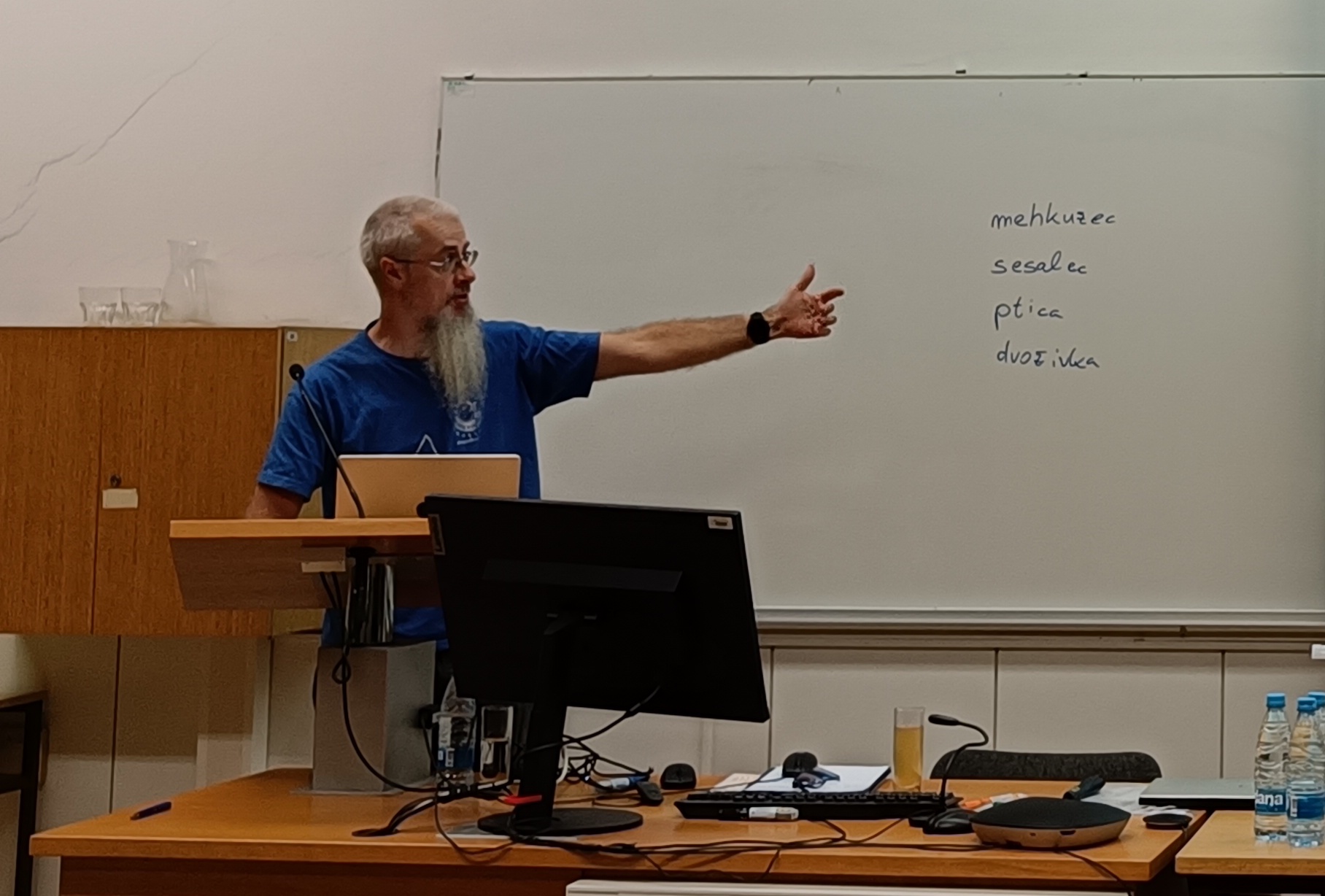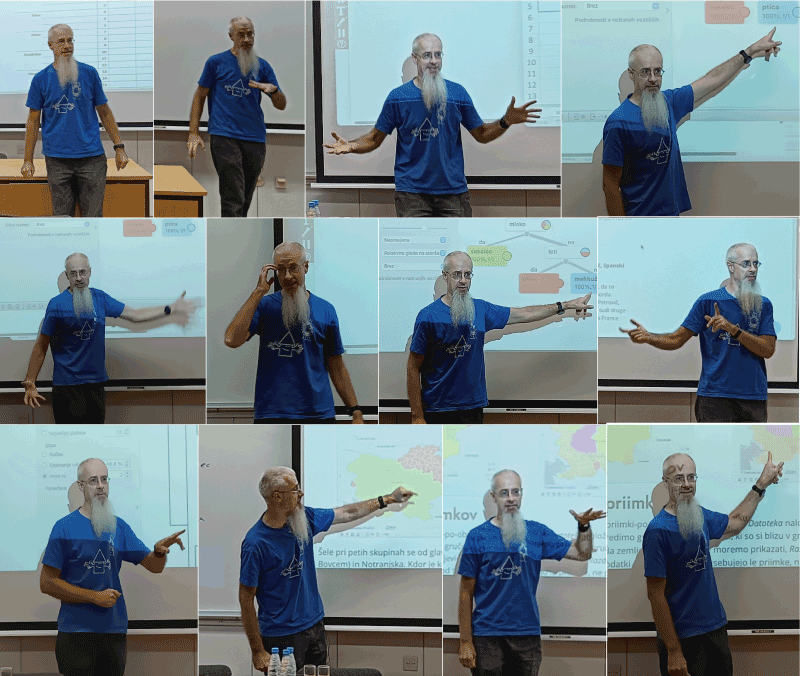
SteamCoLab 2023: Emil, Whales, and Flying Snails
“Toward Sustainability through Co-Creation in the Field of STEAM Education” is a title that may turn some people off due to its appearance of stringing together a bunch of overused trendy words. But the first impression of such a skeptical view would actually be wrong. On the first day of autumn, a number of teachers and students gathered at the UL Faculty of Education to participate in various workshops and lectures in the fields of technology and natural sciences. While the workshops were mostly led by aspiring teachers (current students of the Faculty of Education) who took this opportunity to refine their pedagogical skills, the lectures featured professors from several faculties of the University of Ljubljana and elsewhere, who presented their work, projects, and ideas.
Among the invited lecturers, Professor Ivan Kalaš from the Comenius University in Bratislava was particularly impressive. He described what education in the field of computer science looks like in Slovakia (giving Slovenia a reason to be jealous!). The Slovakian “strategic guidelines” in particular, can be highlighted - for instance, their recommendation is that computer science education should be continuous (as opposed to the subject suddenly disappearing from the school timetable when an enthusiastic teacher decides to change schools or retire) and systematic (consistent, as opposed to taking students on sporadic “interesting trips” to various areas of computer science). Even more fascinating is the Slovakian program called Emil, which – with incredible sophistication, already introduces programing education to kindergarten and continues it well into elementary school.
Of course, the event could not be complete without Pumice. We presented the project through a ZOO-themed lesson. The teachers in the audience displayed just the right amount of mischief. When they were aksed to come up with an example of a mammal, they suggested a whale. (Fortunately, this did not cause any inconvenience.) Later on in the lesson, we asked them to think of an animal that would confuse the model in the best way possible, and their proposal was: a snail. In fact, that was a great reply, as the computer – expectedly, albeit not quite correctly – determined that snails can be classified as … birds.
You can see the lesson summed up in the photos below:
